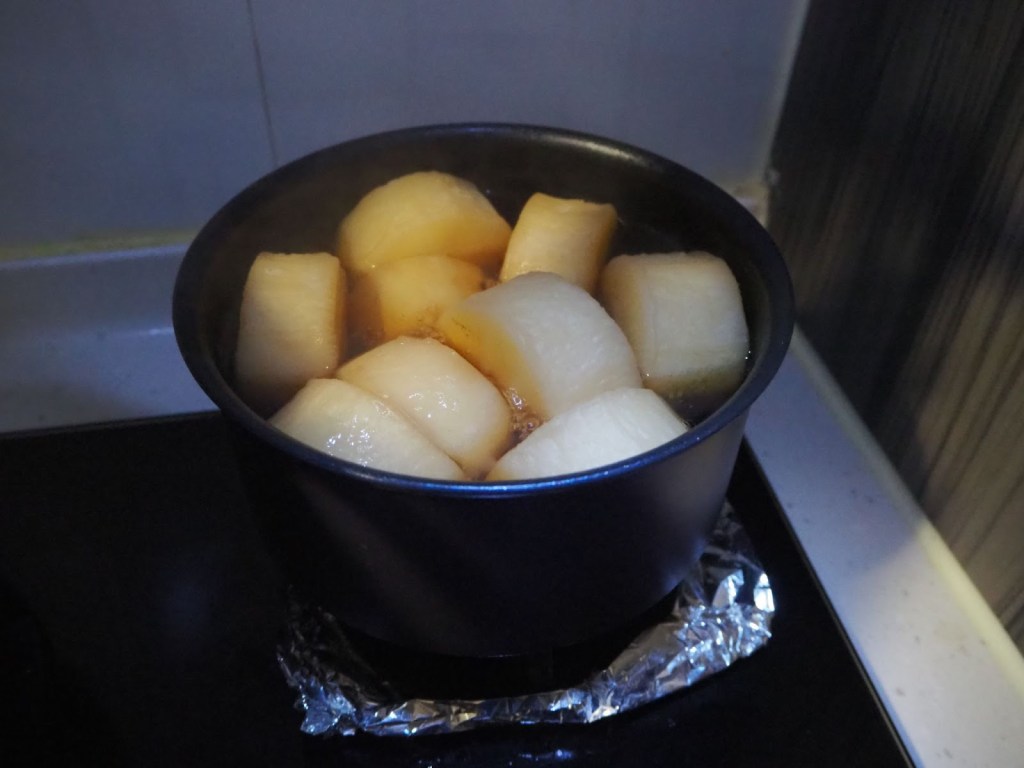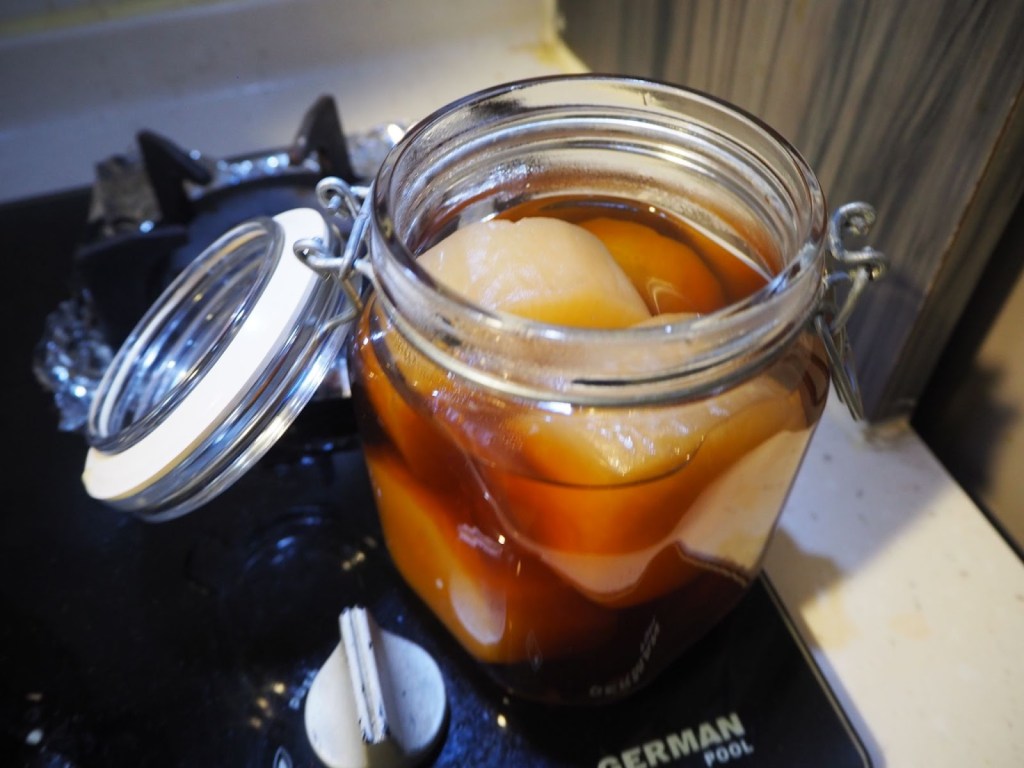Daikon radishes become sweet, tender and savoury when simmered in a dashi-based broth. A fresh counterpoint to any meal that can be served hot or cold.

Time: 3/5
Contemplate the meaning of life as you stare at simmering broth for 45 minutes
Effort: 2/5
Chop chop, into pot
Sweet, savoury, satisfying
Soaking fried vegetables in a marinade of dashi, soy sauce and sugar is a Japanese culinary technique known as Agebitashi – eggplants are wonderful for this. However, it does take some work to fry them and they inevitably absorb some oil in the process, so when I’m craving that flavour profile but looking for something lighter I turn my attention to Daikon radishes.
Daikon become deliciously tender and sweet when cooked. They’re even further elevated when thick, hearty cuts of daikon are simmered in a dashi-based broth, infusing them with a clean-tasting but savoury broth. This is known as Daikon no nimono in Japanese.
Serve cold as an appetiser or salad, or warm as a topping for stews, soups or ramen. This time I had some alongside chicken teriyaki rice bowls, and they were great as a fresh counterpoint in between bites of sweet and sticky glazed chicken (which I was able to infuse with a smoky charcoal-grilled flavour, without a charcoal grill – find out how).
A word of caution though: make sure you have an exit plan if you’re making a big batch. In my experience, daikon radish sometimes develop a subtle sulphurous smell if left to sit in the fridge beyond 4 or 5 days. Having said that, it shouldn’t be a problem if you finish them by then.

Dramatis Personae
Daikon radish
If there’s a way to differentiate good from bad daikon, please let me know. I usually pick the large ones since there’s less peeling to do proportional to the volume, and that method has yet to let me down.
Broth
Any ratio of dashi and soy sauce (including potentially all one and none of the other) will work, although keep in mind that dashi does not taste like much on its own but makes everything else it touches taste several times better. Some recipes sweeten the broth with sugar or mirin, but personally I find daikon to be plenty sweet on its own.
Try a 1:1 ratio of dashi to soy sauce, and adjust from there. Dilute with water if you need to, but keep in mind that the daikon will expel a lot of water as it cooks.
Executive summary
- Bring dashi and soy sauce to a simmer in a small pot or saucepan.
- Sigh in exasperation when half the lights in your kitchen decide to blow out at the same time.
- Soldier on. Wash, peel and cut daikon into large rounds.
- Simmer daikon rounds in the broth until tender, checking regularly beginning at about 30 minutes.
- Serve warm, or allow to cool and store in the fridge.
Play by Play

Wash, peel and slice daikon into thick sections, keeping in mind that they will shrink as they simmer. Optionally, go round the edges with a knife or a vegetable peeler. It helps the pieces look nicer by avoiding the corners from getting mushy from the long simmer.


Simmer in your sauce until you can slide a chopstick into the sections with little resistance. They’ll take on colour from the broth, and shrink by about 30%. How long this takes really depends on how large your pieces are. For reference, my ~5cm / ~2 inch pieces took me just under an hour before they got where I wanted them to be.

Serve immediately, or cool in the fridge. They will keep for about a week in the refrigerator.

Served here with some of the broth and a bit of scallion for garnish. Enjoy!
Thanks for subscribing! See you around.
Keep browsing by categories, or by tags:
Beef Blog Broccoli Cabbage Carrots Cast iron Cheese Chicken Curry Dashi Date Night Dried scallops Dried shrimp Eggs Fish and seafood Garlic Ginger Glass noodles Gochujang Honey Miso Napa cabbage Onion Oven Pasta Pork Potatoes Salmon Sesame oil Shiitake mushrooms Shrimp Soup Sous Vide Steaming Stewing Stir fry String beans Sweet potatoes Teriyaki Tofu Tomatoes Vacuum cooker Vegetarian Yogurt Zucchini
